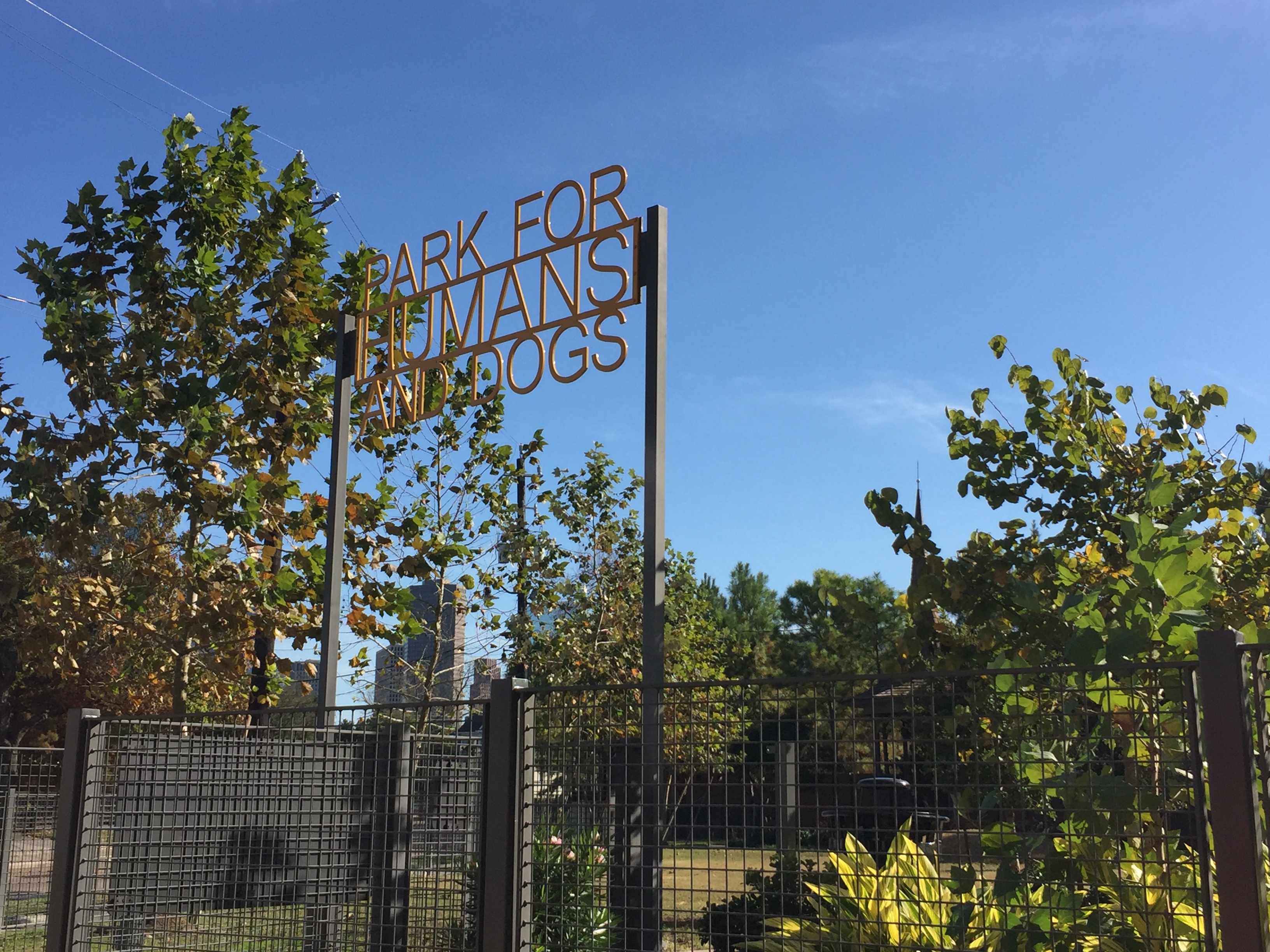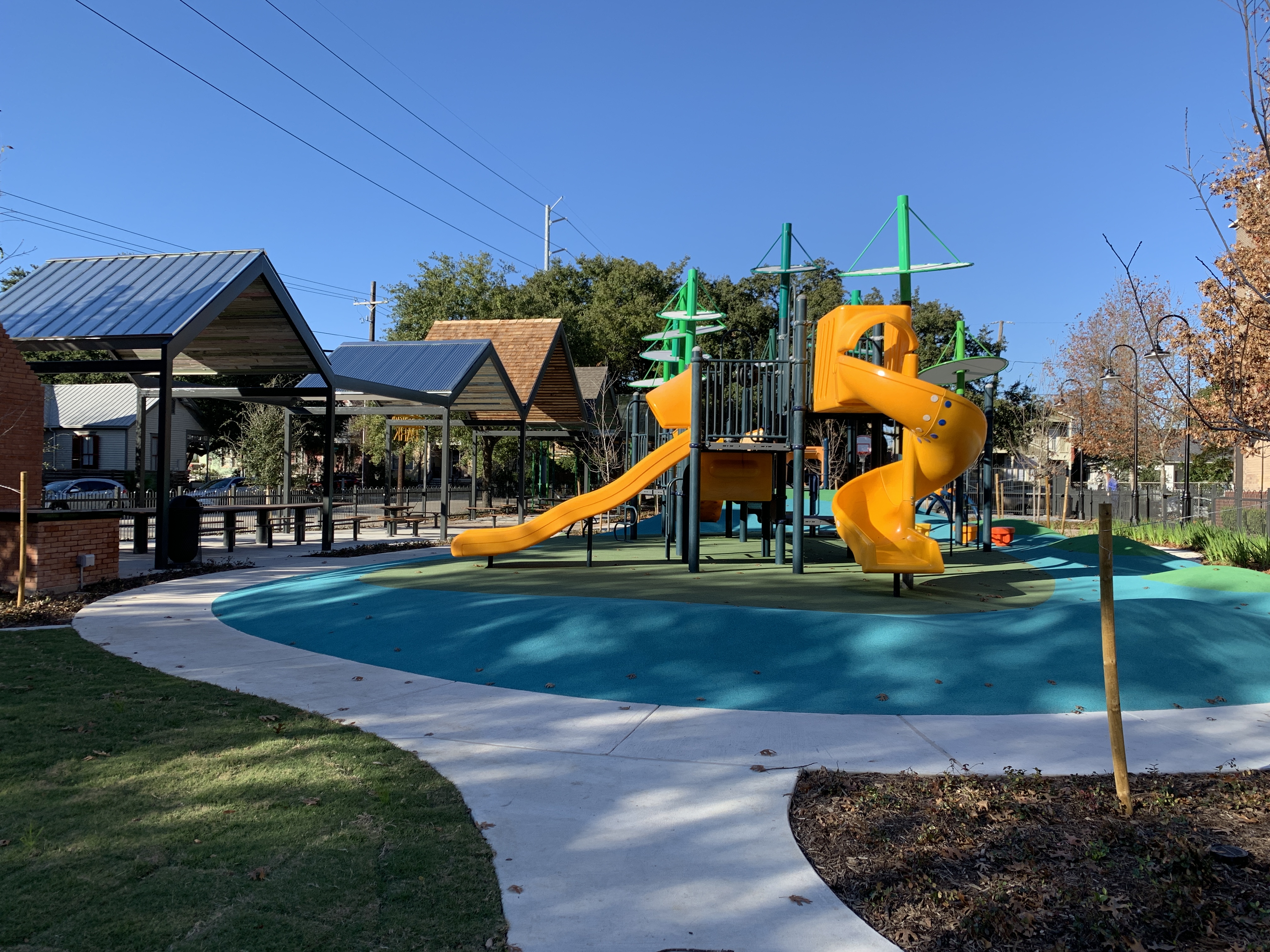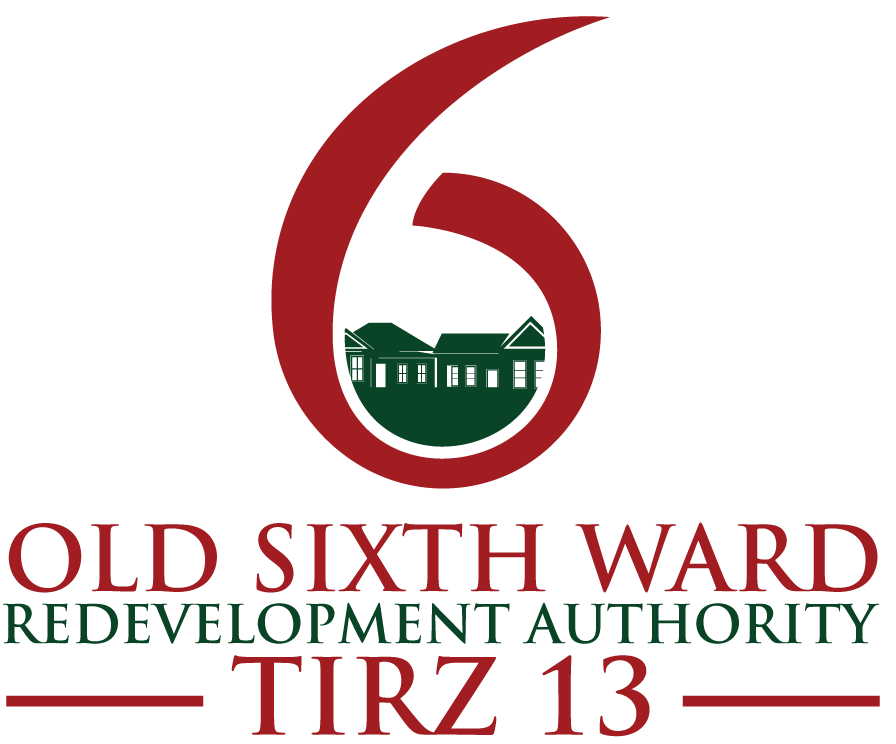Green space and cultural enrichment projects to enhance the livability in the zone have included:
Design and construction of Sawyer Park/The Park for Humans and Dogs on the west side of Sawyer Street, just south of Washington Avenue. A collaboration between neighborhood residents, architects and engineers, the artfully fenced park
-

The Park for Humans and Dogs accommodates dog-owners and pedestrians with greenspace and added art elements. Designers configured the space with the restored Witch’s Hat turret-turned-gazebo cupola as its central element. Years earlier preservationists had salvaged the iconic turret from the demolished 1899 Allen Paul House from Houston’s historic South End—now Midtown—and it lives on in a new spot but remains in the historic center.
- Financial support for construction of Memorial Silver Park, an oak-tree draped sliver of land located between North Memorial Way and Memorial Drive. The design incorporates seating, gathering and green space and sidewalks.

- Purchase of the 1912 Dow School to be retained as a community hub, park and multicultural initiative at the center of the residential sector of the zone. Multicultural Education and Counseling through the Arts Project (MECA) maintains the original historic character of the building and operates as a community-based nonprofit. Because of the Old Sixth Ward TIRZ involvement, the property is deed restricted to protect the historic character of the Dow School building, require the property owner to be a non-profit corporation exempt from federal taxation, and restrict the use of the building to cultural and educational purposes. Read more about the project.
-

Dow Elementary Park Redesign and implementation of Dow Middle School Park, the space adjacent to MECA on the west side of the building. Now under construction, the existing park fronts White Street between Kane and Lubbock Streets and was completed in early 2020.
- Partnering with BetterHouston for the advisory board in connection with the Washington Avenue Livable Centers Study. The purpose of this initiative is to apply the goals of a “livable center” to a specified area through planning studies and implementation projects. A “livable center” is a walkable, mixed-use place that provides multimodal transportation options, improves environmental quality and promotes economic development. Read more about the Washington Avenue Liveable Centers Study.
 Building off of this study, Asakura Robinson created the WAve Pattern Book to provide direction for the development and public realm aesthetics of Washington Avenue and the adjacent major streets, including Sawyer, Edwards and Houston Streets, within the Old Sixth Ward TIRZ 13.
Building off of this study, Asakura Robinson created the WAve Pattern Book to provide direction for the development and public realm aesthetics of Washington Avenue and the adjacent major streets, including Sawyer, Edwards and Houston Streets, within the Old Sixth Ward TIRZ 13. - Commitment to its mission and per an agreement with the City of Houston, a third of the Old Sixth Ward TIRZ’s revenue is returned to the city to aid the City’s Houston Hope initiative. The Land Assemblage Redevelopment Authority (LARA) is working with experienced builders and community development corporations to build new affordable homes.
